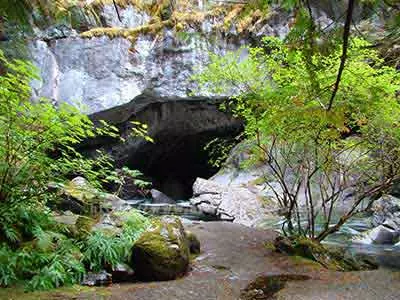- Photography's Leading Lines: Your Gateway to Compelling Composition
- Techniques for Using Leading Lines
- Types of Leading Lines: Natural vs. Man-made
- Composition Techniques with Leading Lines
- Technical Aspects of Capturing Leading Lines
- Creative Approaches to Using Leading Lines in Photography
- Common Mistakes in Using Leading Lines and How to Avoid Them
- Mastering Leading Lines Through Practice
- The Future of Leading Lines in Photography
- Summing Up The Enduring Significance of Photography's Leading Lines
- Frequently Asked Questions
Photography’s Leading Lines: Your Gateway to Compelling Composition
The Importance of Composition in Photography: Photography’s leading lines provide a visual path to lead the viewers eye where the photographer wants them to go. Sometimes they show motion or direction. They also can lead you to the main subject in the composition.
Good composition matters in photography. It deals with arranging elements within the frame, such as the subject, lines, shapes, colors, and more. Well composed photos convey a story, evoke emotions, and capture the viewer’s attention.
Introducing Leading Lines as a Fundamental Composition Technique: Leading lines are a key photo composition technique. Leading lines help draw attention to the main subject. These lines can take physical forms, like rivers or roads, or they can be implied by patterns, shadows, or scene elements.
How Leading Lines Guide Viewers’ Eyes and Create Compelling Images: Leading lines direct attention and add depth to photos. When used effectively, leading lines lead the viewer through the frame, enhancing the visual story.
By drawing the viewer’s gaze along these lines, photographers can control the way their audience experiences the photograph. They can use leading lines to connect different elements in the frame, emphasize specific details, or create a sense of perspective. Whether it’s a road leading into the horizon, a staircase guiding upwards, or a meandering river taking you deeper into the landscape, leading lines add a sense of visual intrigue and depth to the composition.
In summary, understanding and using leading lines as a composition technique is a fundamental skill for photographers. Enabling them to direct attention, create captivating visuals, and tell engaging stories. Regardless of your experience, mastering leading lines enhances your photos.

Techniques for Using Leading Lines
Leading lines are a powerful composition technique in photography that can add depth, guide the viewer’s eye, and enhance the overall impact of an image. To effectively use leading lines, you need to understand how to identify them in a scene, integrate them with other composition principles, adjust camera settings, and utilize light and shadow strategically.
First, identifying leading lines requires a keen eye for lines, whether they are physical elements like roads or rivers or implied by patterns and shadows. Recognizing their potential is the first step in utilizing them effectively.
Next, you can enhance your compositions by integrating leading lines with other principles such as the rule of thirds, framing, and symmetry. Placing leading lines along the grid lines of the rule of thirds or framing your subject with them can create visually appealing and balanced compositions.
Camera settings play a crucial role. Experiment with depth of field and focal length to emphasize leading lines. A shallow depth of field can isolate the lines, making them stand out, while adjusting focal length can change the perspective and impact of the lines.
Finally, consider the use of light and shadow to emphasize leading lines. Strong directional light can create dramatic shadows, enhancing the lines and adding dimension to your photos.
Incorporating these techniques into your photography can elevate your skills and help you create visually compelling images that draw viewers into your visual narratives.
Types of Leading Lines: Natural vs. Man-made
Leading lines are a fundamental compositional tool in photography, and they can be categorized into two main types: natural and man-made. Natural leading lines often consist of organic, flowing elements like rivers, pathways, or the contours of the landscape. These curved lines add a sense of serenity and harmony to an image.
In contrast, man-made leading lines are more structured and often straight or diagonal. They can include roads, railways, and architectural elements, providing a sense of direction and purpose. Diagonal lines, in particular, inject dynamism and motion into a photograph, while converging lines help create depth and perspective.
When it comes to identifying potential leading lines, the key is to maintain a keen and observant eye, regardless of the environment. In urban settings, look for the lines formed by streets, bridges, or skyscrapers. When shooting in natural landscapes, consider the graceful curves of rivers or winding pathways. In architectural spaces, the lines of buildings and structural elements often provide clear leading lines.
However, don’t limit yourself to the obvious. Creative approaches involve seeking out leading lines even in seemingly mundane settings, like a stack of books, a row of chairs, or the shadows cast by everyday objects. By training your eye to recognize these hidden lines, you can discover fresh and intriguing compositions, adding depth and interest to your photography.

Composition Techniques with Leading Lines
Mastering the art of composition with leading lines is essential for photographers seeking to create captivating and dynamic images. To use leading lines effectively, start by considering the strategy that suits your subject and story best. Straight lines like roads can lead viewers directly to a focal point, while curved lines such as rivers add grace and flow to your composition.
Balancing leading lines with other compositional elements is equally crucial. The rule of thirds, framing, and symmetry can enhance your shots when combined with leading lines. Placing a leading line along the gridlines of the rule of thirds, or using it to frame your subject, can result in balanced and visually appealing compositions.
Leading lines are a potent tool for creating depth and perspective. By incorporating converging lines that recede into the distance, you can convey a sense of scale and distance. Experimenting with various techniques and practicing the skill of leading lines can significantly enhance your ability to craft visually engaging and impactful photographs.
Technical Aspects of Capturing Leading Lines
Capturing leading lines in photography involves strategic use of camera settings, lighting, and post-processing techniques to emphasize these powerful compositional elements. Leading lines guide the viewer’s eye through the image, often towards the main subject, adding depth and perspective.
Camera Settings for Perfect Leading Lines Shots: Optimal camera settings are crucial. A wide-angle lens can exaggerate the perspective, making leading lines more pronounced. A smaller aperture (higher f-stop number) ensures a greater depth of field, keeping both the leading lines and the subject in sharp focus. A tripod is often essential for maintaining sharpness, especially in low-light conditions.
The Role of Lighting in Emphasizing Leading Lines: Lighting dramatically affects how leading lines are perceived. Side lighting can accentuate the texture and depth of the lines, while backlighting can create silhouettes and shadows that strengthen the visual pathway. The golden hour, just after sunrise or before sunset, offers soft, directional light that can highlight leading lines beautifully.
Post-Processing Techniques to Enhance Leading Lines: In post-processing, adjusting contrast and sharpness can make leading lines more prominent. Tools like the dodge and burn can be used to subtly highlight or darken areas along the lines, guiding the viewer’s eye more effectively. Color adjustments can also play a role; desaturating certain elements while keeping the lines vibrant can draw more attention to them.
Incorporating these technical aspects in capturing leading lines can significantly elevate the impact and composition of a photograph.

Creative Approaches to Using Leading Lines in Photography
Leading lines are a fundamental compositional tool in photography, but creative approaches can transform them into extraordinary elements that break the mold for unique perspectives.
Breaking Conventional Rules for a Unique Perspective: Traditionally, leading lines guide the viewer’s eye towards the main subject. However, breaking this rule by using lines to mislead or create tension can add intrigue. Experimenting with unconventional angles or perspectives, like shooting from low or high viewpoints, can redefine the relationship between the lines and the subject, creating a more dynamic composition.
Using Leading Lines in Various Photography Genres: In landscape photography, natural lines like rivers or paths create depth and draw the viewer into the scene. Urban photography offers a plethora of straight and curved lines in architecture that can frame subjects or divide the frame. Leading lines in portraits highlight the subject, in abstracts, they form intriguing patterns and textures.
Post-Processing Tips to Enhance Leading Lines: Post-processing can significantly accentuate leading lines. Increasing clarity and contrast can make the lines more pronounced. Selective color enhancements or converting to black and white can shift focus to the lines. Using vignetting subtly can also lead the viewer’s eye towards the lines. Adjust the composition by cropping, which realigns photography’s leading lines with other frame features.
Innovative leading line techniques inspire out-of-the-box thinking, leading to more striking photos.

Common Mistakes in Using Leading Lines and How to Avoid Them
Leading lines are a powerful compositional tool in photography, but their misuse can lead to common mistakes. Awareness and strategic adjustments can prevent these pitfalls.
Over-Reliance on Leading Lines
While leading lines can strengthen a composition, over-reliance on them may overshadow the main subject or story of the image. To avoid this, ensure that the lines complement rather than dominate the scene. The subject should remain the focal point, with the lines acting as a guide rather than the main feature.
Balancing Leading Lines with Other Compositional Elements
It’s essential to balance leading lines with other compositional elements such as symmetry, patterns, or framing. This balance prevents the lines from overwhelming the composition and helps create a more harmonious and visually appealing image.
Misalignment of Leading Lines and Subject Matter
Leading lines should direct the viewer towards the main subject or area of interest. Photography’s leading lines should focus on the subject, or they’ll disorient the viewer. Align the lines so they naturally guide the viewer to the key elements of the photograph.
Avoiding Clutter and Confusion in Compositions with Multiple Leading Lines
Multiple leading lines can create a dynamic and complex composition, but they can also lead to clutter and confusion. To avoid this, choose one or two dominant lines to focus on and use the others as supporting elements. Simplify the composition by eliminating unnecessary lines and ensuring that each line has a clear direction and purpose.
By avoiding usual pitfalls, photographers can harness leading lines for more impactful imagery.

Mastering Leading Lines Through Practice
To master the use of leading lines in photography, practical exercises, study of renowned works, and personal experimentation are key.
Practical Exercises to Improve Skills in Utilizing Leading Lines
Take several shots of a known location, altering the leading lines to the main subject in each. This practice helps in understanding how different lines affect the viewer’s perception. Shooting a series with just one line style (straight, curved, diagonal) sharpens your creative eye..
Analyzing Famous Photographs for Leading Line Usage
Studying iconic photographs helps in understanding how master photographers use leading lines effectively. Pay attention to how lines are used to guide the eye, create depth, and add context. Analyzing different genres can also provide insights into how leading lines work in various settings and themes.
Experimentation and Personal Style Development
Leading lines offer endless creative possibilities. Experiment with unconventional angles, line types, and compositions. This could involve using reflections, shadows, or artificial elements to create lines. Exploring leading lines lets photographers discover distinctive storytelling approaches.
Regular practice, analysis, and experimentation are the cornerstones of mastering leading lines. They not only enhance technical skills but also contribute to the development of a personal and distinctive photographic style.

The Future of Leading Lines in Photography
Advancing tech and fresh trends are shaping an exciting future for the classic tool of leading lines.
Advancing Techniques And Trends: As photographic styles evolve, so do the ways leading lines are used. In today’s photography, there’s a trend of uniting classic leading lines with abstract, avant-garde forms. Aerial views from drones are redefining leading lines’ use in both natural and city landscapes.
The Role of Technology in Enhancing Leading Lines: Technological advancements play a significant role in how leading lines are utilized. High-resolution cameras and sophisticated lenses offer greater clarity and detail, making it easier to capture subtle lines. Using software, smartphones highlight lines in photos instantly, opening up advanced composition to more users.
Predictions for Future Use of Leading Lines in Photography: As photography evolves, leading lines will enhance immersive virtual reality (VR) and augmented reality (AR). Expect more strategic use of leading lines in growing environmental and social documentary photography.
Even as photography progresses, leading lines maintain their importance, continuously reinventing themselves. Photography’s leading lines are poised for an exciting future, thanks to the blend of traditional and modern approaches.

Summing Up The Enduring Significance of Photography’s Leading Lines
Leading lines aren’t just compositional; they draw viewers in, add depth, and focus on key subjects. Their importance lies in their versatility and ability to transform an ordinary scene into a captivating visual story.
From basics to future trends, we’ve thoroughly examined the multifaceted world of leading lines. Dynamic and adaptable, leading lines reflect changing styles, technologies, and artistic trends.
Your opportunity to experiment with these techniques starts now. From novice to expert, leading lines are a boundless playground for creativity. Experiment with different angles, contexts, and settings. Observe how leading lines change the narrative of your photographs.
We invite you to share your journey and experiences with leading lines. Post your photographs on social media, photography forums, or in photography groups. Inspire and be inspired – your art fuels community learning. Through sharing, we collectively enhance and learn, enriching photography’s diverse landscape.
Embrace the power of leading lines, and let them guide your creative vision. These aren’t just lines; they’re narrative paths awaiting capture by your camera.

